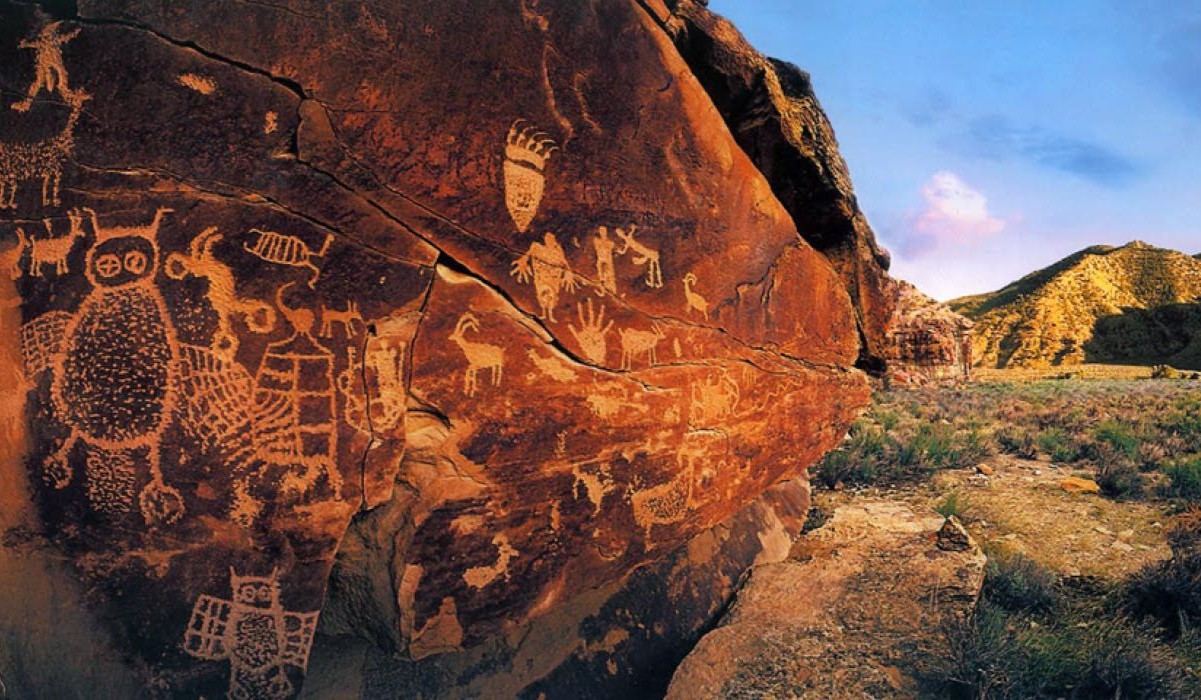Hidden Treasures Of Utah’s Nine Mile Canyon Petroglyphs

Have you ever wondered where you can find ancient art in the middle of nowhere? Nine Mile Canyon petroglyphs in Utah offer a glimpse into the past with thousands of rock carvings. These petroglyphs, created by the Fremont and Ute people, tell stories of their lives, hunts, and beliefs. Imagine walking through a canyon where every rock face holds a piece of history. It's like stepping into an outdoor museum, but without the crowds. Whether you're a history buff or just love exploring, this hidden gem is worth the trip. Ready to learn more about this incredible place? Let's dive in!
Hidden Treasures of Utah's Nine Mile Canyon Petroglyphs
Nine Mile Canyon, often dubbed the "world's longest art gallery," is a hidden gem in Utah. This canyon, stretching over 40 miles, houses thousands of petroglyphs and pictographs etched by ancient Native American tribes. Let's explore some of the most fascinating spots within this canyon.
The Great Hunt Panel
One of the most famous petroglyphs in Nine Mile Canyon is the Great Hunt Panel. This intricate artwork depicts a hunting scene with bighorn sheep and hunters, showcasing the skill and storytelling of the Fremont people.
- The Great Hunt Panel: This panel is a must-see. It vividly portrays a communal hunt, with detailed figures of hunters and prey. The artistry and detail are astonishing, making it a highlight for visitors.
Daddy Canyon Complex
The Daddy Canyon Complex is another significant area within Nine Mile Canyon. This site features a variety of petroglyphs and pictographs, offering a glimpse into the lives of the ancient inhabitants.
- Daddy Canyon Complex: Here, you'll find numerous panels with diverse images, including animals, human figures, and abstract designs. Each panel tells a unique story, reflecting the rich cultural heritage of the region.
Big Buffalo Panel
The Big Buffalo Panel is a striking petroglyph that stands out due to its size and detail. This panel features a large buffalo, a symbol of strength and survival for the Native American tribes.
- Big Buffalo Panel: This impressive artwork showcases a massive buffalo, surrounded by other smaller figures. The scale and detail of this petroglyph make it a captivating sight for visitors.
Fremont Village
Fremont Village offers a glimpse into the daily lives of the Fremont people. This site includes remnants of dwellings and various petroglyphs, providing a comprehensive view of ancient life in the canyon.
- Fremont Village: Explore the remains of ancient homes and see petroglyphs depicting daily activities, such as farming and hunting. This site offers a deeper understanding of the Fremont culture and their way of life.
Owl Panel
The Owl Panel is a unique petroglyph that features an owl, a creature often associated with wisdom and mystery. This panel is a testament to the diverse wildlife that once roamed the canyon.
- Owl Panel: This distinctive petroglyph showcases an owl with outstretched wings. The detail and symbolism of this artwork make it a fascinating stop for those exploring the canyon.
Cottonwood Panel
The Cottonwood Panel is another remarkable site within Nine Mile Canyon. This panel features a variety of images, including animals, human figures, and abstract designs, offering a rich tapestry of ancient art.
- Cottonwood Panel: This panel is a treasure trove of diverse images, each telling a different story. The intricate designs and variety of figures make it a captivating spot for art enthusiasts and history buffs alike.
First Site
First Site is one of the initial locations where petroglyphs were discovered in Nine Mile Canyon. This site features some of the oldest and most well-preserved petroglyphs in the area.
- First Site: As one of the earliest discovered sites, it boasts some of the most ancient and well-preserved petroglyphs. The age and condition of these artworks provide a unique glimpse into the distant past.
Rasmussen Cave
Rasmussen Cave is a hidden gem within Nine Mile Canyon. This cave features a variety of petroglyphs, including some rare and unique designs not found elsewhere in the canyon.
- Rasmussen Cave: This cave is home to rare and unique petroglyphs, offering a different perspective on the ancient art found throughout the canyon. The secluded location adds to the sense of discovery and adventure.
Conclusion
Nine Mile Canyon is a treasure trove of ancient art and history. Each site within the canyon offers a unique glimpse into the lives and culture of the Native American tribes who once called this place home. Whether you're an art enthusiast, history buff, or simply an adventurer, Nine Mile Canyon's petroglyphs are sure to captivate and inspire.
Discover the Magic of Nine Mile Canyon
Nine Mile Canyon offers a unique glimpse into ancient history. The petroglyphs tell stories of people who lived there thousands of years ago. Walking through the canyon, you can almost feel their presence. The rock art is not just beautiful; it's a connection to the past.
Visiting this hidden gem in Utah is like stepping back in time. It's a place where history and nature blend seamlessly. Whether you're an avid hiker, a history buff, or someone who loves the outdoors, Nine Mile Canyon has something for everyone.
Don't miss the chance to see these incredible petroglyphs. They are a testament to human creativity and resilience. Plan your trip today and experience the magic of Nine Mile Canyon for yourself. It's an adventure you won't forget.

